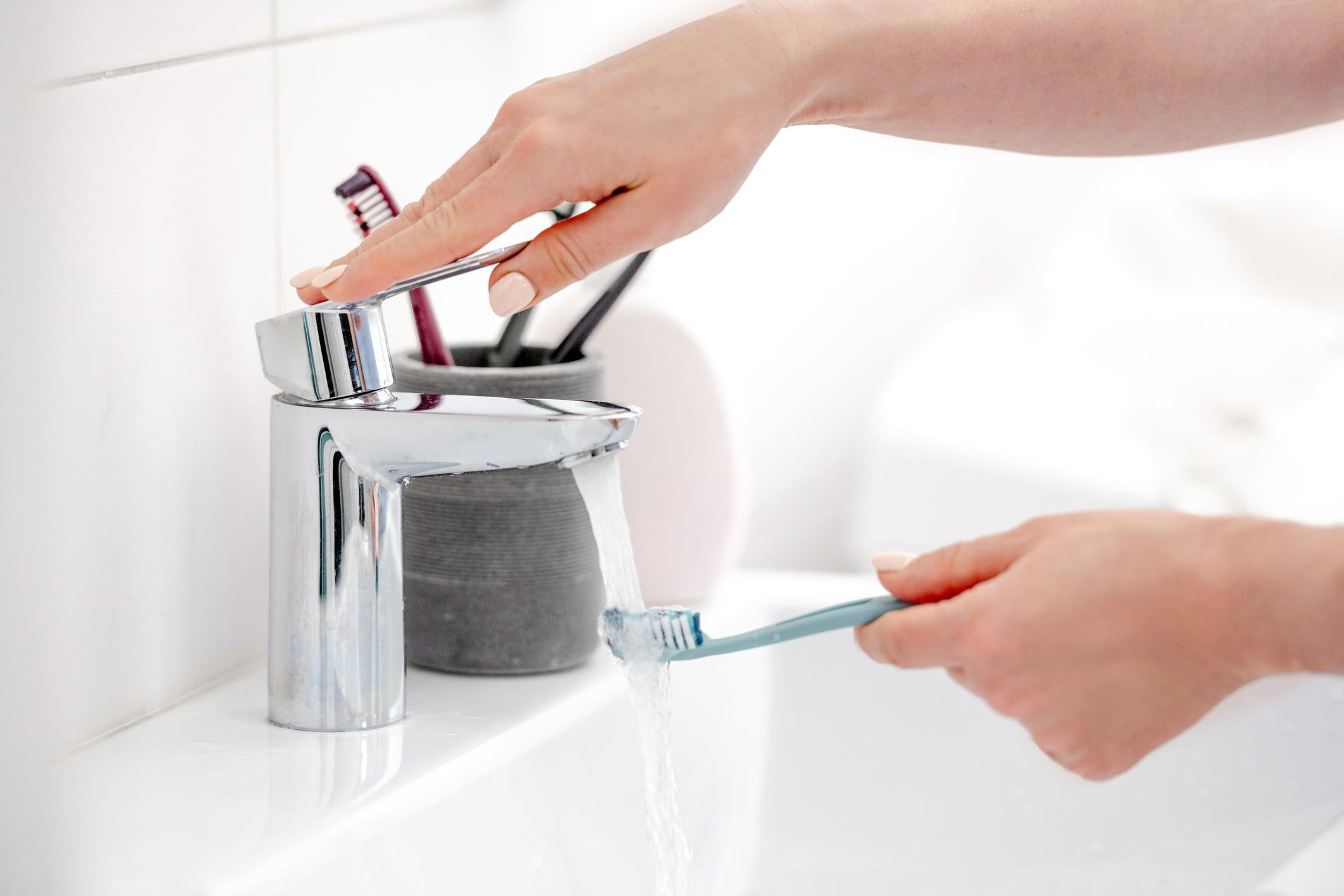More U.S. cities are removing fluoride from their drinking water

On different sides of the country, people are battling in court about fluoride, a chemical that has been added to drinking water since the 1940s.
In California, plaintiffs in the Food and Water Watch et al. v. United States Environmental Protection Agency et al. case argue that fluoridation presents “an unreasonable risk of injury to health under the Toxic Substances Control Act” and should not be put in the public water supply. In New York, it’s the opposite – plaintiffs from Buffalo are seeking damages upwards of $160 million because fluoride was removed from their water supply years ago with no notice.
“Those are damages that are increasing every single day,” said attorney Robert Corp. “As far as we’re concerned, every day that goes by without fluoride in the water continues to harm the people of Buffalo.”
A second phase of the California trial began this year, and Audacy station WBEN reported last month that equipment is being installed to put fluoride back into Buffalo’s water supply. These cases are just two examples of arguments going on about water fluoridation throughout the nation, according to the Kaiser Family Foundation.
“From Oregon to Pennsylvania, hundreds of communities have in recent years either stopped adding fluoride to their water supplies or voted to prevent its addition,” said the outlet. “Supporters of such bans argue that people should be given the freedom of choice.”
One group advocating for the removal of fluoride from public water supplies is the Fluoride Action Network. Per the group, fluoride is a “highly toxic substance” linked to multiple health issues and 274 communities have rejected its use since 2010.
USA Today reported this week that the once fringe notion that fluoride might be dangerous has become more mainstream recently. Still, it said “official health agencies have reaffirmed the assertion that fluoride continues to be safe.”
The history of fluoridation of water in the U.S. began at the turn of the 20th century, when researchers began looking into a condition that resulted in mottled teeth in different U.S. towns. Eventually, they determined the condition was caused by increased levels of naturally occurring fluoride, a common mineral.
Researchers also discovered that while fluoride caused teeth to become mottled, it also prevented them from decaying. They were able to come up with a certain level to put into water supplies to help prevent people from developing cavities without getting mottled teeth.
Grand Rapids, Mich., became the first community in the U.S. to fluoridate its water. Within 11 years of this move, dental caries in children had decreased by 60%. Dental caries is a “chronic infectious disease resulting from tooth-adherent cariogenic bacteria that metabolize sugars to produce acid, which over time demineralizes tooth structure,” per the National Institutes of Health.
“Although dental caries remains a public health worry, it is no longer the unbridled problem it once was, thanks to fluoride,” according to the National Institute of Dental and Craniofacial Research.
Fluoride Action Network notes that fluoridation of water is more common in the U.S. than in other countries.
“In western Europe, for example, only 3% of the population consumes fluoridated water,” said the group’s website.
Last April, the World Health Organization issued a report that found over half of all adults in the WHO European Region had a major oral disease in 2019, “the highest prevalence worldwide,” and urged countries to work on improving dental health. One of the “drivers of harm” identified by the WHO was “inadequate exposure to fluoride in the water supply and in oral hygiene products such as toothpaste.”
In the U.S., around 63% of the population has access to fluoridated water. That level has remained relatively steady over the past two decades, per the U.S. Centers for Disease Control and Prevention.
Despite the fact that most of the country has had fluoridated water for some time, there have been doubts along the way. These have included concerns about cancer, but the National Cancer Institute said there is little evidence linking fluoride to cancer, though the topic has been debated for years.
“Many of the arguments against fluoride are rooted in a fear of how it was first discovered and later introduced into the United States’ water supply,” the Cleveland Clinic explained. “Coupled with the fact that fluoride is most beneficial during a child’s early and adolescent developmental stages, the question of whether or not fluoride is good for you and your kids comes up quite often.”
According to the clinic, there are many conspiracy theories about fluoride circulating online.
“From lowering IQs and causing brain damage to the government’s way of mind-controlling the masses, there are a lot of theories to sift through,” it said.
Concerns about fluoride impacting IQ scores and babies’ brains increased in 2019 when a study was published in the JAMA Pediatrics journal. Authors of the prospective birth cohort study found that fluoride exposure during pregnancy was associated with lower IQ scores in children aged 3 to 4 years.
“Fluoride crosses the placenta, and laboratory studies show that it accumulates in brain regions involved in learning and memory and alters proteins and neurotransmitters in the central nervous system,” said the research. “Higher fluoride exposure from drinking water has been associated with lower children’s intelligence in a meta-analysis of 27 epidemiologic studies and in studies including biomarkers of fluoride exposure.”
An unpublished assessment by the federal government’s National Toxicology Program (NTP) also reported with “moderate confidence” that drinking water containing fluoride at levels at least twice as high as those recommended by the federal government is associated with lower IQ in children. Per the American Association for the Advancement of Science, that research is at the center of the California lawsuit.
The AAAS said that the U.S. Environmental Protection Agency and others “argue there is little strong evidence that the current recommended concentration of fluoride in drinking water – 0.7 milligrams per liter [as of 2015] – poses a threat.”
Paul Caintic, a Department of Justice attorney, said: “Given the current state of science, the court cannot conclude that community water fluoridation presents an unreasonable risk.”
While a decision hasn’t been made yet in the trial, Lynn Goldman, an epidemiologist at George Washington University and former EPA official, doesn’t think the judge will order EPA to ban fluoride in drinking water.
“I can’t imagine a court coming back and saying, ‘You did a risk assessment wrong, and here’s how you should have done it,’” she explained.
However, AAAS added that the court might order EPA to consider fluoride as a toxic substance and make it a high priority for a new evaluation to establish safe exposure limits.
In 2020, the Department of Health and Human Services even updated its Healthy People 2030 objectives with a goal of increasing “the proportion of people whose water systems have the recommended amount of fluoride” to 77.1%.
Dr. Joseph Gambacorta of University of Buffalo School of Dental Medicine told WBEN earlier this year that Buffalo should “get the water fluoridated as soon as possible.”
“You know, there’s a lot of naysayers out there that fluoride in the water doesn’t do anything…” he said. “But in this situation, there’s a lot of literature that’s been published to demonstrate the positive impact that fluoridation in the water system has meant to the public.”


